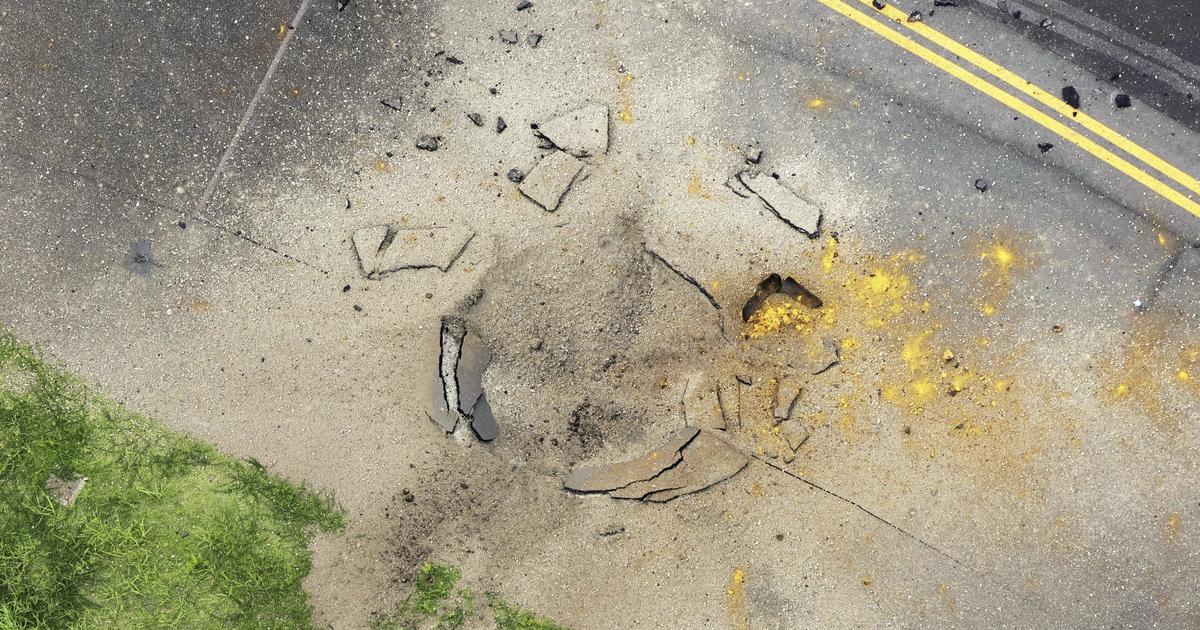The discovery and subsequent detonation of a World War II-era U.S. bomb at Miyazaki Airport in Japan highlights the persistent threat posed by unexploded ordnance (UXO) decades after the end of conflict. The unexpected explosion, which caused a significant crater in the airport’s taxiway and led to the cancellation of over 80 flights, underscores the potential dangers associated with these remnants of war and the ongoing need for careful handling and disposal. This incident serves as a stark reminder of the lasting impact of conflict, not only on the physical landscape but also on the safety and security of modern infrastructure and civilian populations. The detailed account of the event, including the investigative process and the subsequent response, provides a valuable case study for understanding the complexities of managing UXO risks in post-conflict environments. The event also triggered a broader discussion on the prevalent presence of such unexploded devices throughout Japan and similar affected regions.
The Miyazaki Airport Bomb Detonation
The Event and its Aftermath
On Wednesday, an unexploded 500-pound U.S. bomb from World War II detonated at Miyazaki Airport. The blast created a sizable crater in a taxiway, approximately 7 yards in diameter and 3 feet deep. Video footage captured the moment of the explosion, showing asphalt fragments being ejected into the air. Miraculously, no injuries were reported as no aircraft were in the immediate vicinity at the time of the detonation. The incident forced the immediate closure of the airport, resulting in the cancellation of over 80 flights. Authorities swiftly initiated investigations to determine the cause of the spontaneous detonation and to ensure there was no remaining threat. The Japanese Self-Defense Forces and police collaborated to confirm that the explosion originated from the U.S. bomb and ruled out any further danger. The airport authorities worked to assess the damage and initiate repairs to resume operations, aiming for a resumption of services within 24 hours. The event led to significant disruptions to air travel but thankfully avoided any loss of life.
The Investigation and its Findings
Following the explosion, a thorough investigation was launched. Authorities confirmed that the detonation was caused by the World War II-era bomb. Investigations are currently underway to pinpoint the exact cause of the sudden explosion. This analysis is crucial not only for understanding the immediate event but also for informing future UXO detection and disposal strategies. The collaboration between the police and fire departments ensured efficient management of the incident site, enabling a swift and organized investigation and risk assessment. This meticulous approach was crucial for determining the absence of any further risks. This coordinated effort underlines the vital collaboration between agencies in responding to high-stakes emergencies stemming from historical conflicts.
The History of Unexploded Ordnance in Japan
The Legacy of World War II
Miyazaki Airport’s history is intrinsically linked to World War II. Originally constructed in 1943 as an Imperial Japanese Navy flight training field, it served as a launch point for kamikaze missions. Consequently, the area surrounding the airport is known to contain a significant number of unexploded bombs dropped by the U.S. military during the war. This historical context explains the presence of the bomb and highlights the ongoing challenges Japan faces in dealing with the legacy of wartime ordnance. The persistent discovery of these explosive devices underlines the lasting impact of World War II on Japan’s landscape.
Ongoing UXO Discovery and Disposal
The discovery of unexploded bombs in Japan is not uncommon. Construction sites and other development projects frequently unearth such remnants of the war. In 2009 and 2011, unexploded ordnance was found near the airport, underscoring the consistent presence of UXOs within this region. Reports indicate that hundreds of tons of unexploded bombs remain buried across Japan. The Self-Defense Force disposed of 2,348 bombs weighing 41 tons in fiscal year 2023 alone. This ongoing effort emphasizes the magnitude of the UXO problem and the continuous need for detection and disposal programs. The consistent discovery of such items is a testament to the extensive nature of the issue, making risk assessment and remediation strategies vital.
Implications and Future Considerations
Safety and Security Measures
The Miyazaki Airport incident underscores the urgent need for enhanced safety measures and more advanced detection technologies for UXOs. The unexpected detonation highlighted the vulnerability of civilian infrastructure even in supposedly clear areas. Improved detection methods and rigorous safety protocols are crucial for preventing future incidents. Investment in new technologies and a stronger emphasis on UXO remediation is necessary to address this ongoing risk and to enhance infrastructure safety and civilian security.
International Collaboration and Best Practices
The management of UXO is not a solely national concern. International collaboration is crucial in sharing best practices, technologies, and knowledge to effectively address the global UXO challenge. By learning from past experiences, such as the incident at Miyazaki Airport, countries can collaborate in establishing consistent and improved procedures for UXO identification, handling, and disposal. Collaborative efforts could significantly impact efficiency in such operations and increase safety. This event serves as an educational case study and a vital reminder to establish standardized procedures within global standards of operational practices.
Take Away Points:
- The unexpected detonation of a World War II bomb at Miyazaki Airport highlights the ongoing threat of unexploded ordnance.
- The incident underscores the need for improved UXO detection and disposal methods.
- The historical context of the airport’s use during World War II explains the presence of unexploded ordnance.
- International collaboration and knowledge sharing are crucial in effectively managing UXO risks worldwide.




